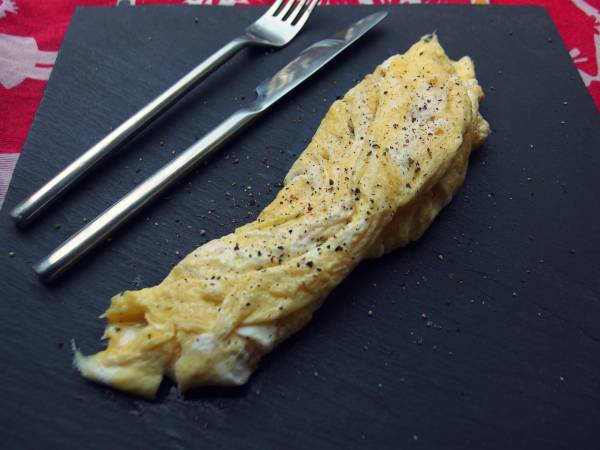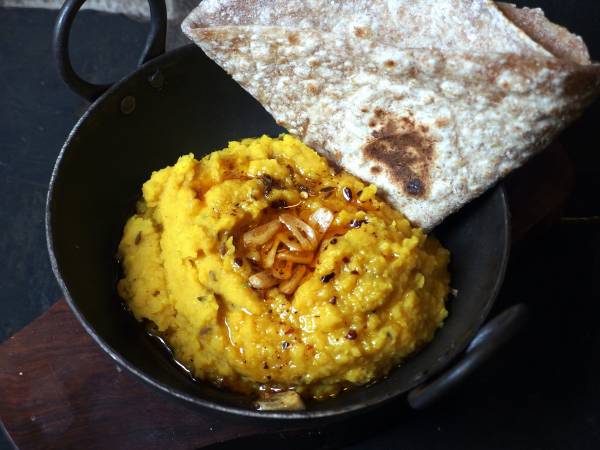Proteins help with immunity, metabolism, and DNA replication. When it comes to sport and fitness, we want to maintain, build, and develop the structural proteins found in muscle fibers and connective tissue. To do that, we need the raw materials.
RELATED: Want More Muscle? Science Says Eat More Protein
Protein is made up of amino acids, which are obtained when the body breaks down protein. So in short, we need to consume protein to make protein. This also means we need to think about the quality and quantity of our protein sources.
Dietary Protein Sources
- Eggs: The gold standard. In fact, the unit of measurement for protein absorption is based on egg protein.
- Meat and fish: Both contain high amounts of quality protein.
- Plant sources: Some vegetables, legumes, seeds, and heritage grains contain significant amounts of protein.
- Dairy: Good for easy-to-process liquid protein, but it’s currently generating some bad press. I personally love a glass of milk.
- Offal: The choice of polar bears. And they have the hardest punch in nature, so they must be right.
Here are three of my favorite protein-rich recipes to fuel your workouts.
Basic French Omelette
Eggs are one of my favorite foods. Egg whites on their own are a source of fat-free, high-quality protein, but leaving out the yolks will deprive you of all of the other nutrients and half of the protein. I’m a whole egg kind of guy.
GOT EGGS? The Great Egg Debate: Why You Should Eat Eggs
An omelette is the best incarnation of this perfect-protein food. Chef Delia Smith said:
If I can teach you how to master the well-made, expeditiously-served omelette, then I will have served you well, because you’ll never be short of one of life’s simplest, quickest, and most pleasant dishes.
Given the simplicity of the ingredients list, the magic must be in the execution. After years of third-party speculation, France’s most infamous omelette-maker, Madame Poulard, revealed her secret:
I break some good eggs into a bowl, I mix them well. I put some good butter into a pan; I throw in the eggs and shake the pan constantly.
I agree with that, apart from one glaring omission that pretty much proves to me that the story is apocryphal: seasoning! No French cook worth their salt would forget, well, the salt.

Yield: Serves 1
Prep Time: 2 minutes
Cook Time: 1 minute
Protein Content: 20g high-quality, easy-to-digest protein
Ingredients:
- 3 eggs
- Unsalted butter for frying
- Pinch salt
Directions:
- Crack the eggs into a bowl with a pinch of salt. Stir with a fork, then leave to rest a little. The salt will then break down the thick albumen so you don’t get a snotty bit.
- Put a 26cm non-stick pan on high heat with the butter. Stir the eggs again but don’t whisk, as air bubbles result in a bouncy, tough omelette.
- When the butter has foamed, add the eggs, and, as the lady said, shake and stir the mixture until it is just set. Fold in the front and back edges, then tilt the pan away from you and roll it up.
- Turn out onto a plate and consume with glee. You can splash on a couple of twists of black pepper and even a few scrapings of parmesan. Aim for a set, but not browned outside and a just-soft center, known in French as baveuse.
Braised Leeks With Liver and Beetroot Wasabi Puree
Eggs are the source for the highest-quality protein, but when it comes to quantity, meat reigns supreme. The weight lifter’s dream diet of steak will testify to that, but there is a more cost-effective, higher-concentration, and overall better quality source: offal.
RELATED: Why All Humans Need to Eat Meat for Health
You could use lamb or beef liver in the following recipe, depending on their availability. In my natural habitat of Wales, lamb is fairly abundant, but either way, getting enough liver for two people will only set you back what it would have cost you to park had you not run to the shops. I would recommend soaking the liver in milk before cooking, which helps mellow the flavor, but it is not essential if you are avoiding dairy. You can also substitute a plant-based oil for the butter if you don’t eat dairy.

Yield: Serves 2
Prep Time: 5 minutes
Cook Time: 35 minutes
Protein Content: About 40g per normal serving. Feel free to pack it away, chaps.
Ingredients:
- 350g beef or lamb liver
- 1 vacuum pack (300g) of cooked beetroot – just plain, not pickled
- 1 teaspoon wasabi paste
- 1 leek, halved and sliced
- 100g frozen peas
- Few fresh sage leaves (or half a teaspoon of dried, if you must)
- 1 Tablespoon cider vinegar
- Butter for frying
- Cup of milk for soaking
Directions:
- Put a large heavy pan with a lid onto a medium to low heat. Add a knob of butter and the leeks, then leave to sweat for half an hour, shaking the pan occasionally. The aim is to soften without coloring.
- Put the liver in a small bowl and cover with the milk, then set aside until it’s nearly action time. Spread the peas out onto some kitchen paper to begin to thaw.
- Make the beetroot puree by whizzing the cooked beets in a blender with a pinch of salt and the wasabi paste. Taste and adjust the wasabi level to your liking. You can pass it through a sieve to make it smooth if you want. Meanwhile, give the leek pan a shake.
- Put a big frying pan onto a medium-high heat once there is about ten minutes cooking time left for the leeks. Drain and pat the liver dry with some kitchen roll.
- Put a knob of butter into the pan and a couple of slices of liver. Season with a little salt and crank up the heat. Remember to never overcrowd the pan!
- Flip the liver after 15 seconds, then give it 15 more seconds and flip again. Repeat this process a total of 6 times.
- Remove and set on a plate. Season with pepper and leave it somewhere warm to rest while you repeat the process with the rest of the liver.
- Lift the lid on the leek pan and add the peas and sage. Give it another shake, then tip in the vinegar and replace the lid. There will be loads of sweetness from the beets, leeks, and peas, so a bit of acidity is a welcome addition.
Finally, find a creative way to plate it all up and Instagram quickly before it gets cold.
Tarka Dhal
One of the most repeated and ignored mantras for a healthier diet is variety. That particularly holds true for dietary protein. We need to have some plant-sourced proteins. Guacamole and hummus are popular choices, but I would imagine everyone has access to twenty-odd recipes for either of those.
RELATED: 5 Easy Ways to Get More Plant-Based Protein
I have chosen to stay with the legumes, and usually opt for lentils, or dhal. They are a great source of protein, but unlike a lot of the other legumes, they don’t require soaking prior to cooking. They don’t provide all of the amino acids we need, but a side of whole wheat will patch that.
Conveniently, this recipe for tarka dahl is best served with the Indian wholemeal flat bread chapati, but the more readily available pita bread (the similarity in names is no coincidence) is nearly as good. This dish also has a fair dose of turmeric, which is a great anti-inflammatory.

Yield: Serves 2
Cooking time: 30 minutes
Protein Content: 22g
Ingredients:
- 500g red lentils
- ¼ teaspoon salt
- Heaped teaspoon turmeric
- 1 small onion
- 1 Tablespoon ghee or clarified butter
- 1 teaspoon cumin seeds
- 2 cloves garlic
- 1 red chili, optional
Directions:
- Put the lentils in a saucepan with a lid and enough water to cover plus about two inches over the lentils. Place on the stovetop and set the heat to high.
- Peel and finely slice the onion add to the pan. It should be sliced finely enough to break down during the cooking.
- When the lentils come to a boil, turn the heat down to a simmer and skim and discard any scum that comes to the surface. Add the salt and turmeric and leave to simmer for 20 minutes with a lid on. This is the dhal.
- This next stage is the tarka (fragranced oil). After simmering the lentils for about 15 minutes, put the ghee, cumin seeds, sliced garlic, and sliced chili (if you are using it) into a cold frying pan and set over a medium-high heat.
- When the garlic turns a golden brown, lift the lid on the dhal and tip in the garlic and ghee mixture. Quickly replace the lid so none of the sizzling fragrant goodness escapes. I love this bit because it elevates a simple peasant dish into something with a little drama.
- Serve with warm chapatis, wholemeal pita, or basmati rice, which has a surprisingly low glycemic index. And relax.
Enjoy these recipes, and feel free to share your favorite protein recipes below!
Photo 1 courtesy of Shutterstock.
Photos 2, 3, and 4 courtesy of Tim Harrison.






